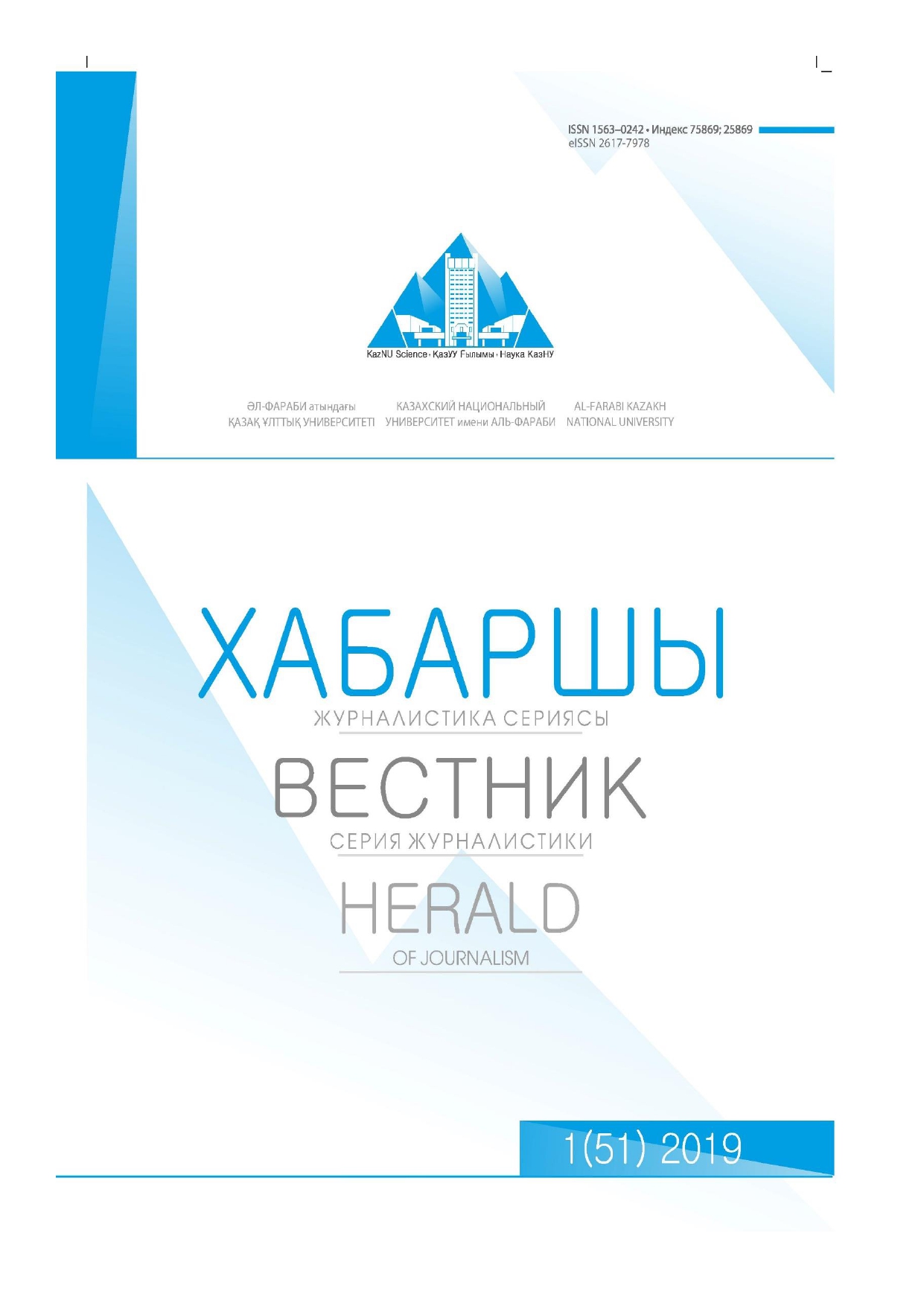Difficulties in the development of data journalism: Kazakhstan experience
DOI:
https://doi.org/10.26577/HJ.2019.v51.i1.020Keywords:
data journalism, Kazakhstan case, digital journalism, digital literacy.Abstract
The paper describes the essential characteristics of data journalism, the conditions and the process of its forming, the basic features of data journalism in social communication. The article discusses a new trend in journalism as “data journalism”, which is based on the processing of open data and their use to create journalistic material. The article describes the main characteristics of data journalism, the condi-tions and the process of its formation, the main functions of data journalism in social communication and its importance in the media sphere of Kazakhstan. The aim of the study is to identify the specifics of the main trends of date-journalism based on international experience and features of the development of regional experience in the composition of modern media, the definition of its structural characteristics. The subject of the research is the key characteristics of the journalist’s tool, called data journalism, which helps to provide the public with im-portant information that could go unnoticed in vast amounts of information about contemporary reality. Internet journalism of metadata defines fundamentally new opportunities for the strategic develop-ment of media content characteristics and functions of modern journalism as an element of open public management, the formation of the science of media (media dialogue). The use of the Internet changes the systemic and functional properties of journalism and the media, marking the communicative Internet as a stage in the development of mass media, since the characteristics outlined above reflect the funda-mental differences in computer communication and information in the Internet and in the characteristics of media content. Because there is an inevitable development of visual journalism, which is a tool for transmitting information. The author determines that the development of data journalism inevitably entails the development of digital literacy. The author concludes that data journalism, as a new format for presenting analytical media content based on the use of digital computer and Internet databases, has successful prospects in Kazakhstan. In this study, the author used the following methods: the method of content analysis (qualita-tive) and the descriptive method (in its modern interpretation). The areas of application of the results: jour-nalism, mass communications, digital journalism in close accordance with the use of ICT technologies.
References
Constantaras E. (2016) Think like a journalist date. Data allows you to see hidden connections, Datebook journalism manual, p. 19.
Data, Data Everywhere (2016) The Economist.
Data Journalism and its traps (2016, Electronic source).
Data journalism: the good, the bad, the ugly (2017, Electronic source).
Doctor K. Newsonomics (2010) Twelve New Trends That Will Shape the News You Get St. Martin’s Press. N.Y.
Future arts, media, and entertainment: seeds for 2020 (2012) N.Y, p. 67.
Gorbachevskij A.A. (2011) Teorija jazyka. Vvodnyj kurs: uchebn. Posobie [Theory of language. Introductory course: textbook] M. Flinta. Nauka.
G. Zn. Ibrayeva (2016) Data Journalisms a New Trend of the Kazakh Media.
Guardiandatablog.org. Guardian Datablog (Electronic source).
Long P. (2018) Thinking about media as texts, Media texts and meanings, pp. 1 ‒ 34.
Mirko Lorenz, Deutsche Welle. Why should journalists use data? (2016, Electronic source).
Kazakhstan prodolzhayet publikovat’ otkrytyye dannyye [Kazakhstan continues to publish public data] (2017, Electronic source).
Kaul V. (2012) Changing Paradigms of Media Landscape in the Digital Age, p.6.
Lasswell H. D. (1949) Language of Politics: Studies in Quantitative Semantics. N.-Y. G.W.Steward.
Media Communications: Transformation Tendencies. New Paradigms in Mass Сommunication Studies World of Media (2017), p. 266–281.
Oboler A., Welsh C., Krus L. Danger of Big Data (2012) Sociology, vol. 17. № 7.
Open Data. Digital Kazakhstan (2017, Electronic source).
Open Data. Global experience (2017, Electronic source).
Shilina M. (2009) Media of the 21st Century as an Object of Research (Several Theses on Innovative Approaches to the Study of Mass Communications). Medi @ lmanakh. No. 5. p. 6−12.
Zhanabekova M., Barlybayeva S., Myssayeva K. (2014) Development of Mass Media in Kazakhstan. Social and Behavioral Sciences, 159, 512 – 516.
Electronic resources Redactor.in.ua. Zhurnalistika dannykh i yeye lovushki (216, mart 10). Rezhim dostupa: http://redactor.in.ua/ru/actual/7817.
Zhurnalistika_dannih_i_ee_lovushki.
Ijnet.org. Data journalism: the good, the bad, the ugly (2017, July 3). Source: http://ijnet.org/en/blog/data-journalism-good-bad-and-ugly.
News.rambler.ru. Kazakhstan prodolzhayet publikovat’ otkrytyye dannyye (2017, sentybr’ 4). Rezhim dostupa: https://news.
rambler.ru/internet/37814539/?utm_content=rnews&utm_medium=read_more&utm_source=copylink.
Zerde.gov.kz. Open Data. Digital Kazakhstan, (2017). Source: https://www.zerde.gov.kz/activity/center-competencies/open-data/#hcq=oiZfrNq.
Zerde.gov.kz. Open Data. Global experience, (2017). https://www.zerde.gov.kz/activity/center-competencies/open-data/#hcq=oiZfrNq.
Datajournalismhandbook.org. Why should journalists use data? (Mirko Lorenz, Deutsche Welle, 2016). Source: http://datajour-nalismhandbook.org/1.0/en/introduction_1.html.
Guardiandatablog.org. Guardian Datablog. https://www.theguardian.com/data.




